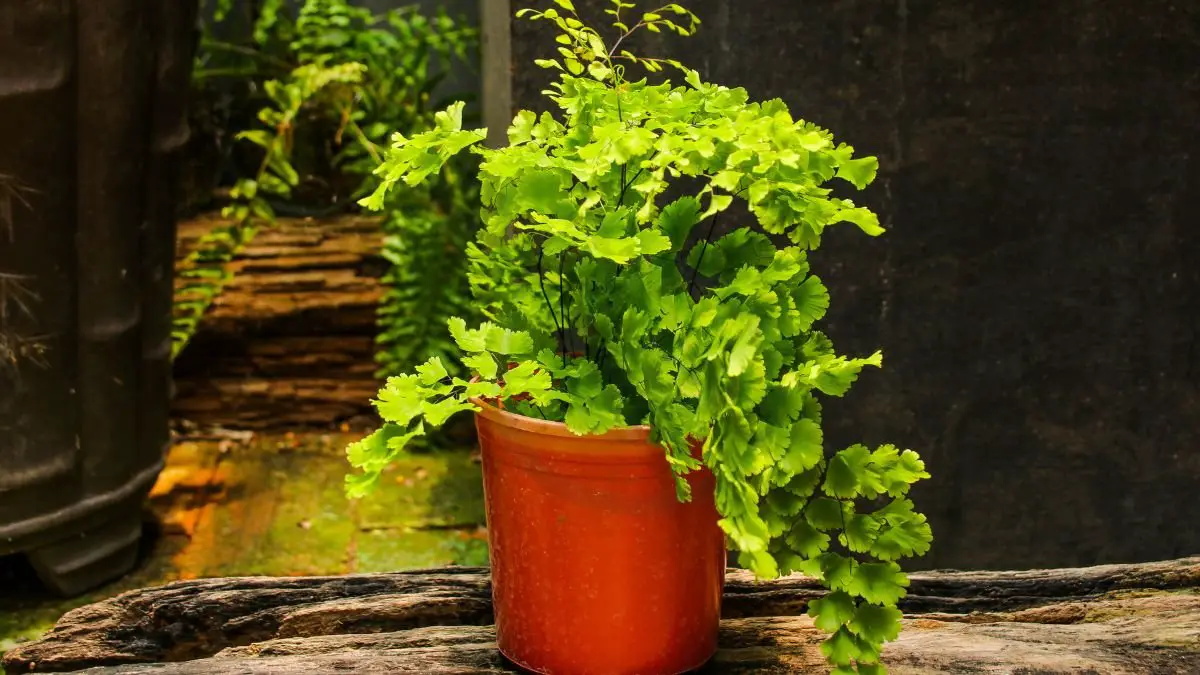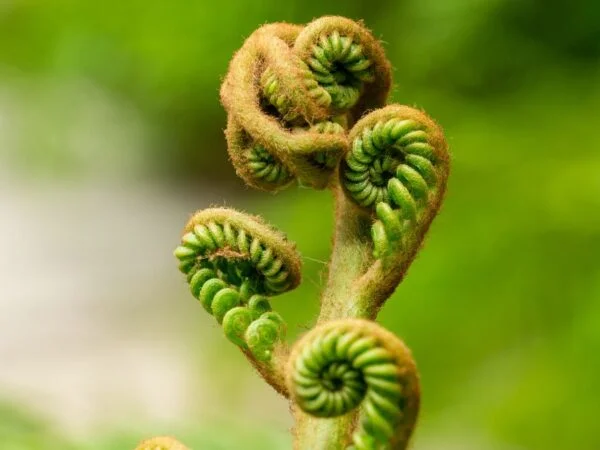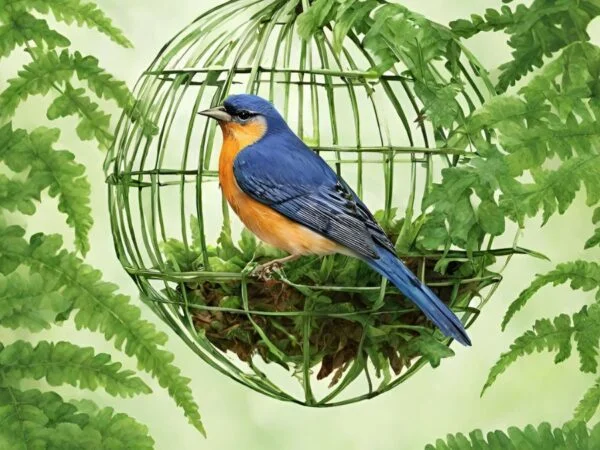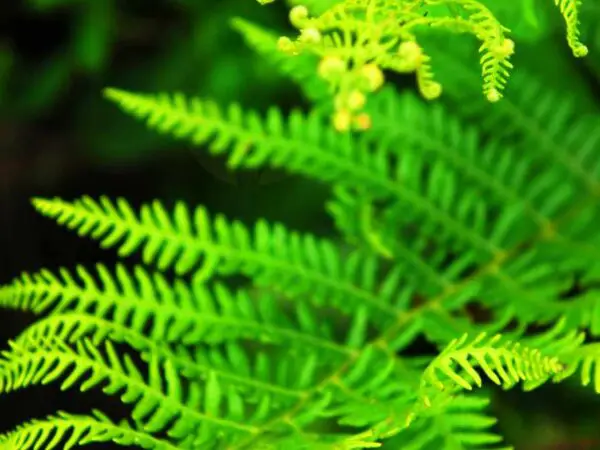If you're seeking guidance on how to care for a maidenhair fern, frond, you've come to the right place. These delicate plants require specific attention indoors to thrive and flourish in your home. By understanding their unique needs and providing the proper care, you can enjoy the beauty of a healthy maidenhair fern brightening up your living space.
Key Takeaways
- Provide your maidenhair fern with consistent moisture by watering when the top inch of soil feels dry, and maintain high humidity levels to mimic its natural environment.
- Place your maidenhair fern in bright, indirect light and protect it from direct sunlight to prevent leaf burn and maintain its vibrant green color.
- Propagate your maidenhair fern through division or spores for new plants, ensuring they receive the same care and attention as the parent plant.
- Monitor your maidenhair fern for common issues like yellowing leaves or pests, addressing them promptly to prevent further damage.
- Prevent leaf problems such as browning or curling by avoiding drafts, temperature extremes, and over-fertilization.
- Adjust your care routine based on seasonal changes by modifying watering frequency, light exposure, and humidity levels to support your maidenhair fern's growth and health.
Essential Maidenhair Fern Care
Light Requirements
- Place maidenhair ferns away from south or west-facing windows.
- Opt for north or east-facing windows for ideal light exposure.
- Avoid direct sunlight to prevent leaf burning.
Soil Preferences
- Use well-draining potting soil with added compost for moisture retention.
- Ensure consistently moist but not waterlogged soil.
- Choose a potting mix that promotes healthy root growth.
Watering Techniques
- Keep the soil consistently moist by watering regularly.
- Prevent root rot by avoiding water accumulation in the pot and soil.
- Watch for yellow leaves as a sign of overwatering.
Temperature and Humidity
- Maintain warm temperatures around 70°F for optimal growth.
- Increase humidity levels for healthy fern development.
- Avoid cold drafts or temperatures below 60°F.
Fertilizing Schedule
- Fertilize maidenhair ferns monthly with balanced houseplant fertilizer.
- Avoid nitrogen-rich fertilizers to prevent leaf damage.
- Wait before fertilizing newly propagated ferns.
Optimizing Growth Conditions
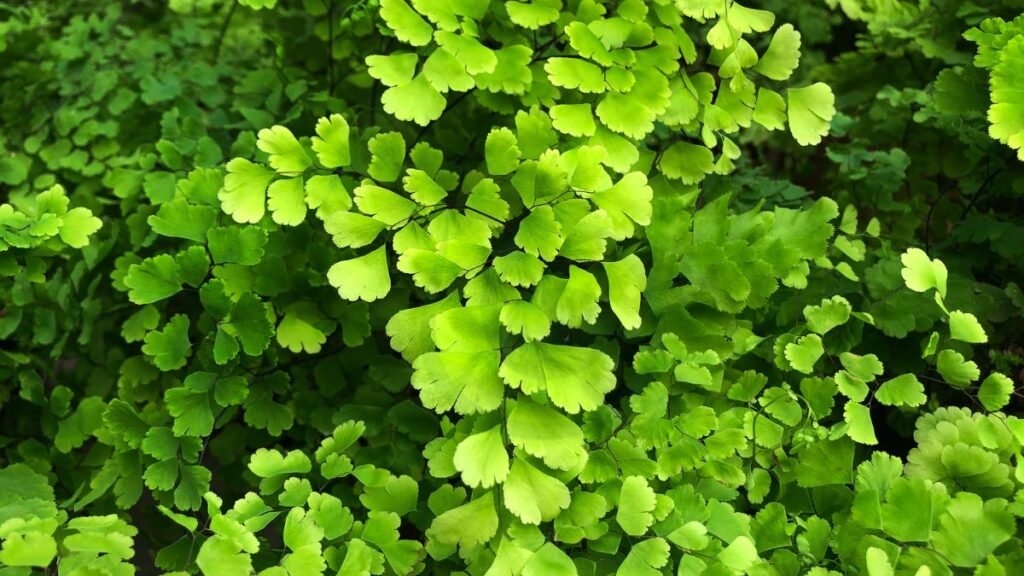
Pruning Practices
Removing Dead Fronds
- Prune dead or damaged fronds promptly for plant health.
- Promote new growth by removing unhealthy fronds.
- Maintain the fern's appearance by regular pruning.
Encouraging Bushiness
- Encourage bushy growth by removing leggy fronds.
- Trim back excess growth to maintain plant shape.
- Promote fuller foliage by regular pruning.
Potting Essentials
Choosing the Right Container
- Select a plastic or glazed ceramic pot with drainage holes.
- Avoid terra cotta pots to retain moisture levels.
- Choose a container that allows proper air circulation.
Soil Mixture Tips
- Incorporate organic matter like compost for soil enrichment.
- Ensure the potting mix is well-draining to prevent waterlogging.
- Use a potting mix, soil that retains moisture for healthy fern growth.
Repotting Guidelines
When to Repot
- Repot maidenhair ferns annually or biannually if root-bound.
- Choose a slightly larger pot for repotting to accommodate growth.
- Repot in fresh potting mix to provide essential nutrients.
Step-by-Step Process
- Carefully remove the fern from its current pot for repotting.
- Gently loosen the roots before placing in fresh potting mix.
- Water the newly repotted fern thoroughly to settle the soil.
Propagation Methods
Division Technique
- Divide maidenhair ferns using a clean, sharp knife to ensure a smooth cut.
- Plant the divided sections in fresh potting mix to promote healthy new growth.
- Wait patiently before fertilizing recently divided ferns to prevent any stress on the plant.
Spore Propagation
- Propagate maidenhair ferns using spores as an alternative method for creating new plants.
- Create a suitable environment with high humidity and warmth to encourage spore germination.
- Monitor the spore growth closely to ensure successful propagation of new maidenhair ferns.
Troubleshooting Common Issues
Pests and Diseases
Identifying Pests
- Check for common pests like spider mites or aphids regularly.
- Treat pest infestations promptly to prevent plant damage.
- Use natural remedies or insecticidal soap for pest control.
Preventive Measures
- Maintain good air circulation to prevent fungal diseases.
- Keep the plant clean by removing debris regularly.
- Quarantine new plants to avoid introducing pests.
Browning Leaves
Address browning leaves by adjusting watering habits. Check for pests or diseases causing leaf discoloration. Trim browned areas to promote new growth.
Yellowing Leaves
Monitor yellow leaves as a sign of overwatering. Adjust watering frequency to prevent further yellowing. Ensure proper light exposure to maintain leaf health.
Falling Leaves
Investigate falling leaves for underlying issues like pests or diseases. Check soil moisture levels to prevent leaf drop. Prune damaged fronds to encourage new growth.
Preventing Leaf Problems
To address curled leaves, adjust humidity levels around the maidenhair fern to ensure it thrives. Regularly check for pests that might be causing the leaf curling issue. Consistent care, including proper watering and light conditions, is crucial to prevent leaf curling in the future.
Curling Leaves Solution
- Adjust humidity levels to address curled leaves effectively.
- Check for pests like spider mites or aphids causing leaf curling.
- Provide consistent care by maintaining proper watering and light conditions.
Reviving Dried Ferns
When dealing with dried ferns, adjust both watering and humidity levels to revive the plant effectively. Trim off severely dried fronds to encourage new growth and overall health. Gradually increase watering frequency to rehydrate the plant without overwhelming it.
Seasonal Care Adjustments
Winter Care Tips
Maidenhair ferns need protection from cold drafts in winter to thrive. Increasing humidity levels helps combat dry indoor air that can harm the plant. During winter, reduce watering frequency to prevent root rot.
Summer Maintenance
Shade is essential during hot summer months to avoid leaf scorch on maidenhair ferns. Increase watering in summer to maintain soil moisture levels for healthy growth. Keep an eye out for pests that are attracted to warm temperatures.
Advanced Maidenhair Fern Topics
Varieties Exploration
Maidenhair ferns offer a range of unique characteristics across different varieties. Research the specific care requirements for each fern type to ensure optimal growth. Consider adding diverse maidenhair ferns to your indoor garden for a vibrant display.
Explore various maidenhair fern varieties such as Adiantum capillus-veneris, known for its delicate fronds, or Adiantum raddianum with its compact growth habit. Each variety may require specific care, including varying levels of light, water, and humidity. Understanding these differences will help you provide tailored care to your fern collection.
Consider the visual appeal of different maidenhair fern types in your indoor space. Some varieties may thrive in brighter conditions while others prefer shade. By incorporating a mix of fern types, you can create an interesting contrast in foliage textures and colors within your home environment.
Landscape Uses
Integrate maidenhair ferns into shaded garden areas to add texture and depth to the landscape. These elegant plants thrive in moist, shady conditions, making them ideal choices for under tree canopies or alongside buildings where sunlight is limited.
For a creative touch, plant maidenhair ferns in hanging baskets or terrariums to showcase their delicate foliage up close. The cascading fronds of the ferns can add a dramatic flair to any indoor space, bringing a touch of nature indoors.
Utilize maidenhair ferns as ground cover in areas with consistent moisture and shade. Their low-growing habit and lush foliage make them excellent choices for creating a lush carpet beneath trees or along pathways in your garden.
FAQs and Quick Tips
Quick Troubleshooting Guide
Maidenhair ferns are sensitive plants, prone to specific issues like yellowing leaves or brown tips. Detect these problems early to prevent your plant from deteriorating. Swiftly address any concerns to revive your fern's health.
Maintenance Checklist
To ensure your maidenhair fern thrives, establish a regular maintenance routine. Craft a checklist encompassing essential tasks such as watering, fertilizing, and pruning. Track these activities diligently to monitor your plant's well-being and growth.
Closing Thoughts
You've now mastered the art of caring for your maidenhair fern, ensuring it thrives in your care. By following the essential care tips, optimizing growth conditions, and understanding propagation methods, you've equipped yourself to troubleshoot common issues and prevent leaf problems effectively. Remember to make seasonal adjustments and explore advanced topics to elevate your maidenhair fern expertise further.
Now, take this knowledge and apply it to nurture your maidenhair fern into a flourishing beauty. Share your newfound wisdom with fellow plant enthusiasts and continue exploring the fascinating world of plant care. Your dedication will not only benefit your maidenhair fern but also enhance your overall gardening skills. Keep growing and learning!
Frequently Asked Questions
How often should I water my maidenhair fern?
Water your maidenhair fern when the top inch of soil feels dry. Typically, this means watering every 2-3 days. Ensure proper drainage to prevent root rot.
What is the best location for my maidenhair fern?
Place your maidenhair fern in a spot with bright, indirect light. Avoid direct sunlight as it can scorch the delicate leaves. A bathroom or kitchen with high humidity is ideal.
How can I propagate my maidenhair fern?
Propagate your maidenhair fern by dividing the plant at the roots or by taking leaf-tip cuttings. Ensure each new plantlet has roots attached before replanting in a well-draining potting mix.
Why are the leaves of my maidenhair fern turning brown?
Brown leaves on a maidenhair fern can indicate underwatering, low humidity, or exposure to drafts. Adjust watering frequency, increase humidity levels, and keep the plant away from cold drafts.
Can I fertilize my maidenhair fern?
Yes, you can fertilize your maidenhair fern during the growing season (spring and summer) with a diluted houseplant fertilizer. Apply half-strength fertilizer every 4-6 weeks to avoid over-fertilization and leaf burn.
Image Source: Paid image from CANVA

